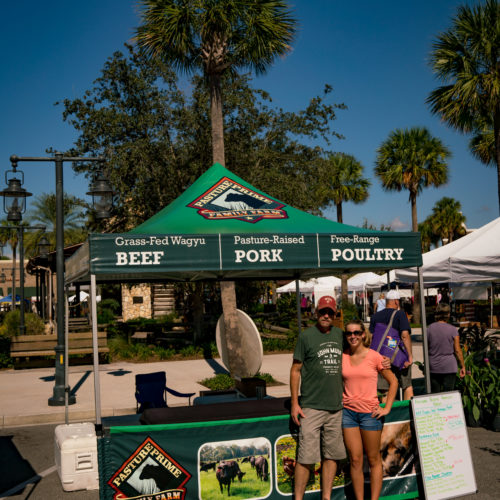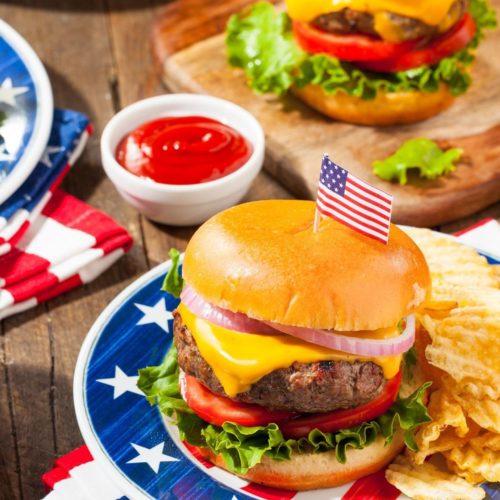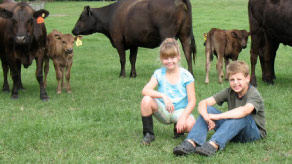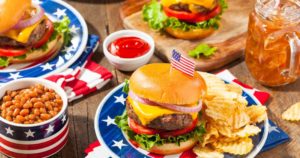
I have to admit: I love a good theme.
And when I say “a good theme,” I don’t mean something like…blue. Blue is a color scheme, yes. A perfectly lovely one! But it’s not a THEME. A theme is something that permeates the whole party or event, where each little touch somehow ties back to the main theme. If it’s so subtle most people won’t even pick up on it? Even better!
This is hard to do when you are party planning! But one holiday where it might be easier (in fact, you might not even realize you’re doing it) is the Fourth of July.
Let’s start with the color scheme. Red, white, and blue, our classic American color palette.
But why these colors? The thirteen stripes on the flag represent the thirteen original colonies, which was originally determined by the Continental Congress on June 14, 1777. While the number of stars continued to fluctuate as more states joined the Union, it was later decided that the number of stripes would remain at thirteen. The current design of the American flag, as we know it today, dates back to 1960 when Hawaii joined the Union.
But originally, the decision to use red, white, and blue in the American flag did not have a specific significance. The colors are similar to those used in the Union Jack of England, which was the flag originally flown in the thirteen colonies, so simple familiarity may have played some role in color selection. Later on, when the Great Seal of the President of the United States was being developed, both the fact that these colors had been used in the flag and the significance of the colors red, white and blue was taken into consideration and shared with Congress during the seal design presentation in 1782. White represented purity and innocence, while red represented valor and blue vigilance and justice, Charles Thomson, Secretary of the Continental Congress, explained.
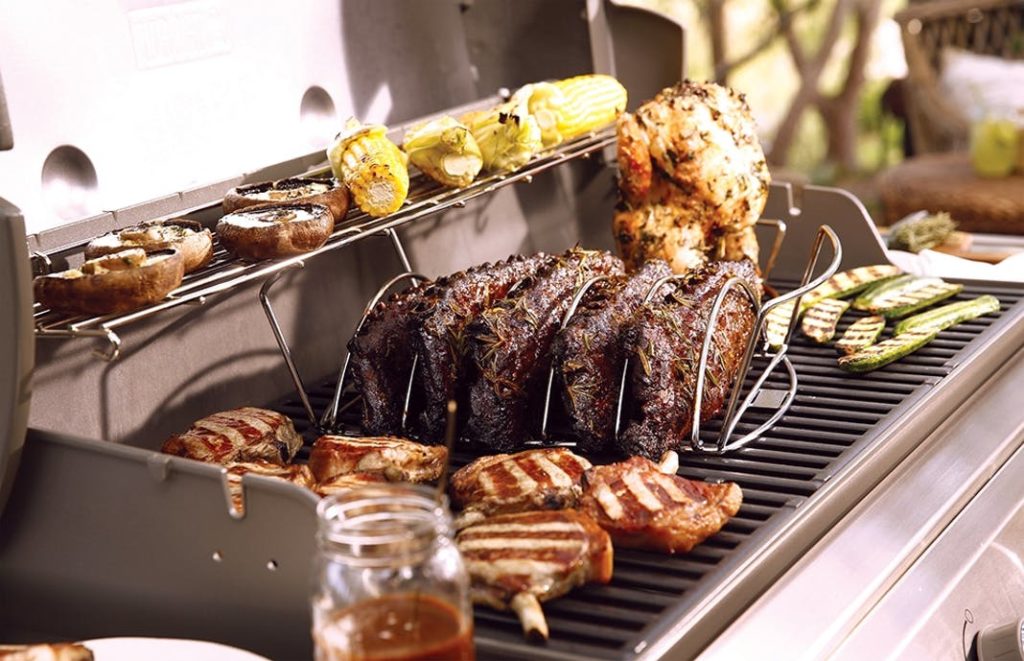
In addition to an all-American color scheme and abundance of flags, the Fourth of July usually features a barbecue or two…gazillion.
Sixty-three percent of grill-owning Americans in 2017 reported firing up the grill on the Fourth of July, making July 4th the country’s most popular barbecue date. Why do we do this? What made a BBQ the go-to option for celebrating our independence?
The tradition of outdoor cooking to observe Independence Day dates back to the early 1800s. In a time before a reliable, speedy postal service, never mind today’s instant access to information at our fingertips, one way for politicians to share their views and ideas was to hold a rally.
The promise of food was an added incentive to draw in the crowds. Independence Day was a popular date for these events and they became particularly prevalent in the South, where colonists in Virginia had been smoking large animals over pits during the summer months since well before the colonies declared their independence from King George III. In the 20th century, the advent of personal, household grills made holding your own barbecue feasible, and the tradition of the family-and-friends barbecues we’re all familiar with today was formed.
And why are we all cooking what we’re cooking?
While the original Independence Day barbecues featured large animals, such as whole pigs or even buffalo, today, burgers and hotdogs are the norm. In the 1800s, Germans emigrated to America and brought their favorite foods with them, among them frankfurters, wieners, and hamburgers. While the original hamburg steak was a semi-cured piece of beef that more closely resembles today’s bun-less Salisbury steak recipes (“hamburg steak” shifted to “Salisbury steak” during World War I to avoid any affiliation with Germany), today’s hamburgers are uniquely American thanks to the addition of hamburger buns, the meat grinder, and burgers’ prominent place in American culture and cuisine. Hotdogs, on the other hand, have stayed fairly similar to their original German predecessors and Americans consume 150 million (wow!) of them every Fourth of July. We’ve got all your barbecuing needs covered with our selection of grass fed hotdogs and hamburgers right here.
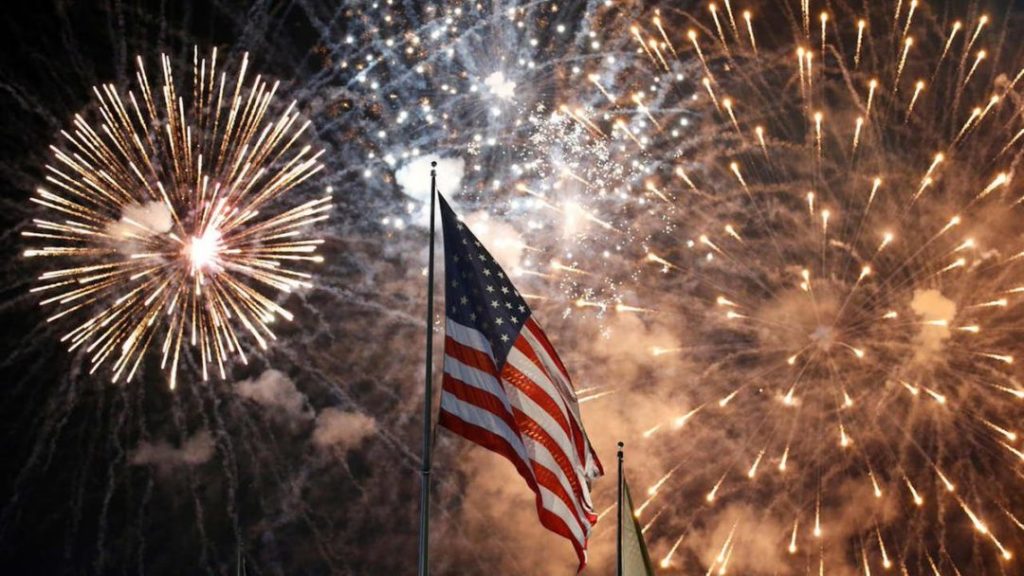
The minute the sun sets on the Fourth, children grab sparklers and start spinning around like little, overtired tops.
Those sparklers, of course, are little handheld cousins of real fireworks, which have been a Fourth of July tradition since 1777. The first Fourth of July fireworks displays were held that year in Pennsylvania and Boston, and by 1783, fireworks were becoming more commonly available and more widely used to light up the sky in celebration of our independence. But why do we do it at all? I mean, sure, fireworks are beautiful, but how did fireworks become so quintessential to our Fourth of July festivities? Well, we can thank John Adams for that. John wrote to his wife in 1776 that the anniversary of our independence should be “solemnized with Pomp and Parade, with Shews, Games, Sports, Guns, Bells, Bonfires and Illuminations from one End of this Continent to the other from this Time forward forever more.” Fast forward to 2019, and that’s exactly what happens. Thanks, John!
And we’ve got one more tradition to share with you today. (And if it’s not a typical one for your barbecue, maybe it should be!)
During the original Independence Day barbecues, the meal was followed by toasts. Thirteen toasts, to be exact, though once you got through the required thirteen, volunteers from the crowd were free to continue offering toasts for as long as they’d like. So raise your glass with us (thirteen times) this Fourth of July in celebration of life, liberty, and the pursuit of happiness!
Happy Independence Day!



